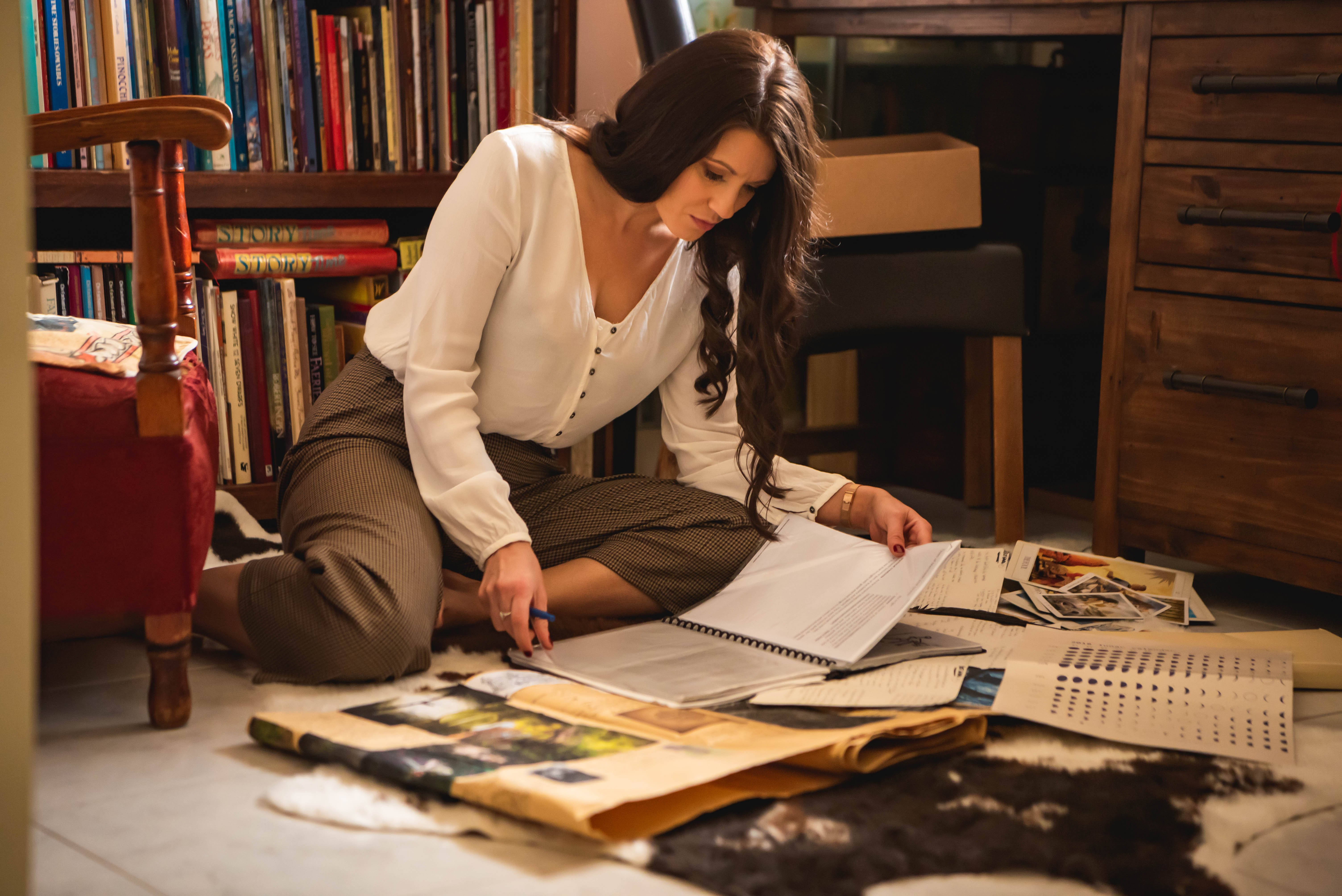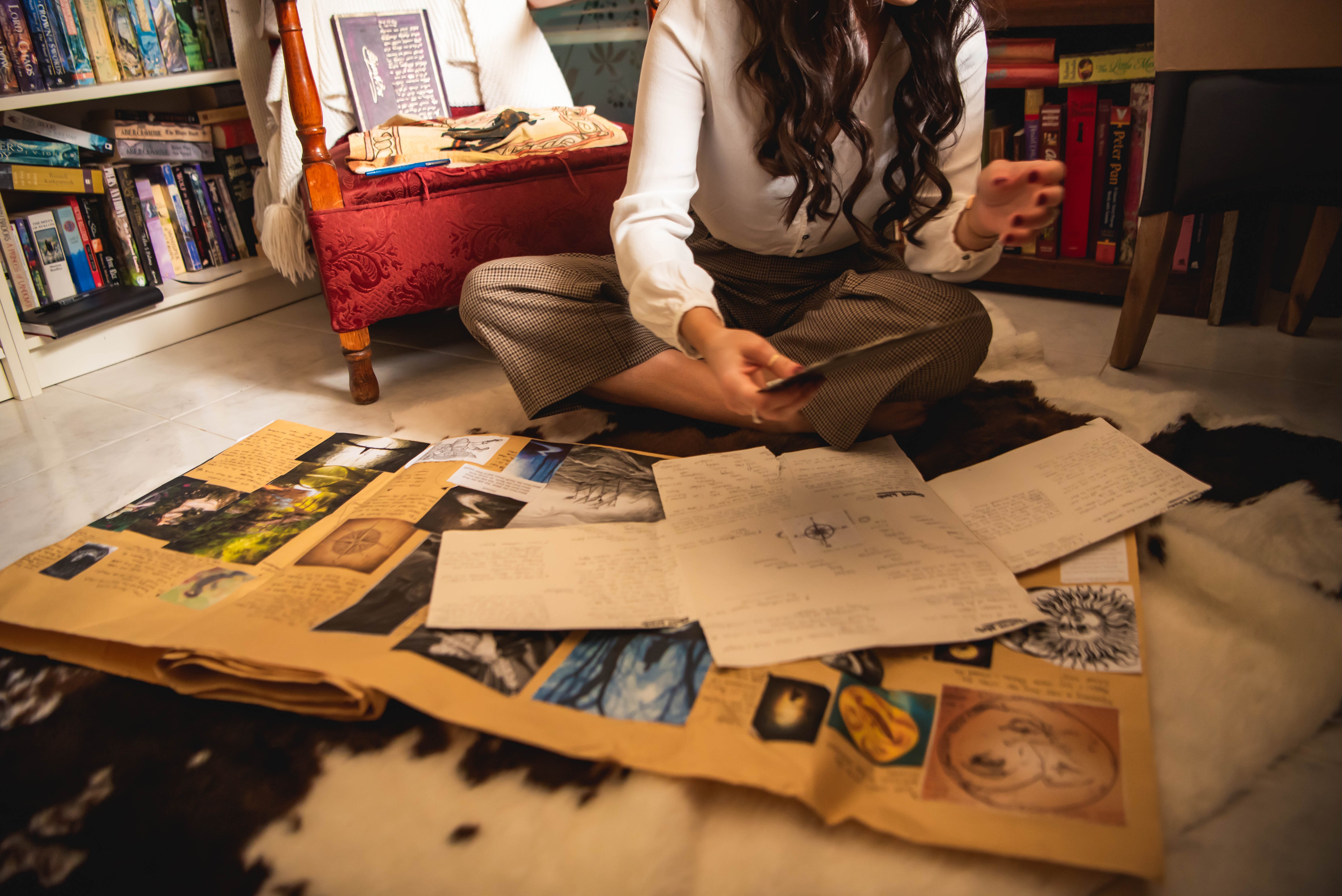Have you ever read a book that left you in a daze? One of those truly magical reads that leaves you feeling as though you’ve just come back from a walk in the woods at twilight, the scent of pine needles still fresh in your mind.
As a reader, this is what I want from a book. I want to feel and experience something with the turn of a page, feel the woven magic of each word.
As a writer, I want to open a window for my readers. I want the view to take them by surprise, to hear the catch in their breaths as they stand there, holding those shutters open and watch for the moment where they get completely, utterly and irrevocably… lost.
What is a Fairy Tale?
When I'm asked what genre I write, I always pause a little before answering.
How do I explain that I write fairy tales without them automatically dismissing my writing as childish? How do I convey to a reader that my work is suitable for children, but can be understood at a much deeper, more subconscious level by an adult?
As a child, I always had a book in my hand. I loved reading more than dolls and toys, more than TV and even friends. But the tales I grew up with were not dark and frightening. They were lovely, full of brave knights and handsome princes that always saved the princess. These tales were something for children. They wrapped us up in a little bubble of happiness and filled little girls with the dream of one day being rescued, of one day having their own, perfect, happily ever after.
But these fairy tales I grew up reading were once something more.

Ancient stories fill this world. Stories that have been passed down for thousands of years well before being collected and preserved by the Brothers Grimm. Researchers believe that there are over 800 different variants of the Cinderella story across the world, dating back to ancient Greece where a historian wrote the tale he had recounted from ancient Egypt. (If you think Cinderella is just a sweet story created by Disney, think again. I recommend reading the Greek version of Cinderella. Gruesome stuff.) This is just mind blowing!
These old tales were powerful and frightening, eerily beautiful and dark.
They changed a little each time they were told, depending on the teller. Tales were told by revered storytellers as they sat by a fire, the night thick with shadows and only a few stars watching on, hoping they too would be mentioned in the telling. They were shared by passing travelers, passed down generation by generation from mother to daughter, father to son, helping to shape each of us on a deeper level.
I was drawn to them—these old, strange, passed down tales. These tales that fascinated me so much, I wanted to create my own.
I wanted to be a storyteller.
I wanted children to read my tales, but I also wanted adults to read and enjoy them too.
So, when people ask me what genre I write, I tell them I write Fantasy (fairy tales are, after all, its sub-genre). I write dark fairy tales in a folkloric style, whose meanings can be interpreted differently by each reader because we’ve each been on our own adventures or are preparing for a journey that is yet to come.
This is the real magic of fairy tales; not only do they offer us a brief escape from reality, but they have the power to make us re-evaluate our own story, shape it, stray from the path and embrace the shadows that grow inside us all.
Morals & Lessons to Learn
The thing I love most about writing fairy tales is that anything goes.
Your imagination is free to come up with all sorts of strange and wonderful things, and the power of make-believe is able to follow the reader from childhood into adulthood. But there are, like with any other mediums, a few rules to follow. A formula of sorts.
If you have read fairy tales or even modern retellings, you will notice that they all have a bit of a pattern to them. The more you read, the more you will start to take notice of how each story has been written and the care taken to lead you, the reader, through the journey from beginning to end. During this journey, the reader will discover a moral or a life lesson to be learned.
Cinderella, a well-known tale, carries with it some important lessons:
- No matter who you are and what you face in life, you can always transform yourself into something wonderful as long as you have the strength to confront your enemies. To believe you are better, that you deserve better. And yet, depending on the variant, it has also been known to mean that “...beauty is a treasure, but graciousness is priceless. Without it, nothing is possible; with it, one can do anything.”1
- With a second moral, “...it is a great advantage to have intelligence, courage, good breeding, and common sense. These and similar talents come only from heaven, and it is good to have them. However, even these may fail to bring you success without the blessing of a godfather or a godmother.” 1
This is one of the very things that differentiates a fairy tale from other works of fiction. There is always a lesson to the reader, an underlying moral to the story.
Even the most bizarre of tales will hold some sort of lesson. Rumpelstiltskin, a favorite of mine, warns the reader of making hasty decisions and the consequences of telling a lie (though in quite an extreme sort of way).
When I set out to write my own fairy tale, the moral actually came last. In fact, the moral is not something I consciously thought about, but nevertheless, it was there. It found me. It made its way into my tale, and I was surprised to find that my tale had more depth to it because of its presence. It took on a whole new meaning, and I realized for perhaps the first time that the words we write come from somewhere truly deep within us.
The other thing that I was pleasantly surprised to discover once my book made its way out into the world was that it held so many different meanings to various readers. Each person had something new to discover, something personal that they gained from it.
The moral of the story was suddenly open to interpretation.
Even the characters resembled something altogether different and unique depending on how the reader viewed it, depending on what journey they have been on in their own lives. This, right here, is magic itself. That a single story can be read and interpreted in so many different ways by people all across the world. For this reason, I can understand why fairy tales have been studied for centuries, why I am so fascinated by them, and why I am compelled to write my own. It wasn’t until I began to receive feedback from my readers that I knew I had created a tale worth telling.
Symbols & Symbolism
Fairy tales, folklore, and mythology from all corners of the world hold various symbols and symbolisms that play an important part in a story. While these symbols have been studied by many folklorists and scholars who have their own interpretations of their meanings, some are still a big unknown. They vary from culture to culture and are based on the values, beliefs, and customs of a time long ago. I’m not going to get into the deeply explored meanings behind them, but I am going to give you a bit of a rundown on some of the popular symbols you may notice in most fairy tales and why I believe we should carry on the tradition in today’s modern retellings.
Popular Symbols in Fairy Tales
- Numbers: Three, Four, and Seven
- Common Household Items
- Animals, Flowers, and the Elusive Forest
Numbers: Three, Four, and Seven
The numbers three, four, and seven hold significant meaning in most fairy tales. They play an important part in a story, and trying to research what it all means can send you into a spiral that takes you back in time to some pretty incredible theories.
The number three, in particular, is very prominent throughout most folkloric tales. It is, essentially, considered to be the perfect number. A family of three, three wishes, three challenges the protagonist must endure, and three gifts.
In fact, the number three is recognized in many titles. Goldilocks and the Three Bears, Three Blind Mice, and The Three Feathers, just to name a few. While the number seems to be almost sacred, we do not need to limit ourselves to its use for the sake of telling our story. I, for example, found myself drawn to the number four instead. The Four Winds, North, South, East, and West, and four gifts bestowed upon the protagonist. However, I did include the number three for the Three Sisters whom The Stranger encounters. They hold quite a large significance in my tale, and it was my way of giving a nod to The Fates or Moirai in Greek mythology. The spinners and weavers of life and death.
Common Household Items
While reading fairy tales, it is sometimes quite easy to bypass some of these important symbols. We are so invested in the story that we sometimes fail to realize how deep the significance of certain objects can be. Common household items are very symbolic, and when we look back on some of our much-loved fairy tales, you’ll notice just how many different ones there are which play an important and vital part in each story. 
Mirrors, for example, were a luxury reserved mostly for the wealthy and were not always used as a means to admire one’s beauty. They were also used by seers who could apparently predict the future or see into one’s past, something we see in Snow White and the Queen’s magic mirror. Bodies of water and crystals also held the same concept, and throughout literature and even history, we see this time and time again. Witches and wizards, gypsies, and fortune tellers searching in their crystal balls, and even the ancient druids staring meditatively into cups or pans of water. To this day, we are still entranced by large bodies of water. How often have we gone to the beach and taken a moment to simply stare at the seemingly endless ocean? This itself is a magic that leaves us so mesmerized it takes a moment to come back to reality.
Other symbolic items which you may remember from some of the more well-known tales would be spindles, combs, candles, straw, sticks, and even stones which play a significant part in the story.
But it doesn’t just end with common items. Flowers, birds, and other animals also hold strong symbolic meaning throughout fairy tales, and for each one of them, you will find pages upon pages of study and theories behind them.
Animals, Flowers, and the Elusive Forest
When I set out to write, I find myself spending countless days, even weeks, researching all I can on certain animals who have been personified, roses that have more meaning and depth to them than just a beautiful flower in our garden, different types of witches, fairies and mermaids throughout various cultures.
I had the most fun researching all I could find on the elusive Forest. A dark place spoken of in most tales, where children either find themselves lost or, seeking shelter, find themselves a refuge. A place where, if you strayed from the path, you may find yourself at an old woman’s cottage where you would be fed until you were plump enough to be thrown into an oven. A safe place and yet, a dangerous place, depending on the tale told; a place where characters discover their strengths, their weaknesses, or their true purpose.
These symbols are hard to see at first, especially if you don’t know what you are looking for. It's like following a fine wisp of thread through the dark forest, a spider silk so thin you’re not entirely sure it's even there. But once you allow yourself to explore deeper and deeper into the woods, you’ll discover that that fine wisp of thread you’ve been following is just a small part of one of the most richly woven and detailed tapestries you’ve ever seen.
Mapping it Out: Writing Routine
My routines at the beginning are simple. I pour all my words out in a rush and get the bones of my story out of my head and into a notebook. This can either take on a dot point form, whole written passages, or a mad mixture of both.

Then, I collect images that inspire me or draw my own and map it all out on a large roll of brown paper. The characters, the plot, the locations, and other various little details come to mind. This is what sits in my library and what I stare at until the rest of the story comes alive. It’s also what I use as my reference, what I refer back to when I get stuck when I come across something that just isn’t working. It feels childish having this map at times, but it’s helped me on many occasions; it’s almost like the very first draft of my story, told in images and dot points.
Doing Your Research
A final note, and an important one at that…. do your research. It is an essential part of writing. I cannot stress to you the importance of writing a well-researched story—and this goes for all genres.
My favorite part of beginning any new story is the research. I look forward to it. Sometimes, I will spend months researching every aspect of my story. For one of my characters, The North Wind, I spent at least two months gathering anything I could find on him. I collected poetry and stories, maps, articles, and images. Anything that made even the smallest mention of him, I had to find. I was amazed at how many different ways his character was depicted throughout the centuries.
Then as I read and took notes, he slowly began to take shape in my mind. By the end of it, I had a clear image of who my character was and what I wanted him to be.
As writers, we also need to understand that without doing the proper research, our readers may take notice.

They will see that there is a lack of research done on an area in which they know a lot about. A reader needs to be immersed in the world that you have created, they like to be absorbed in the story, and they do not like being taken abruptly out of it because the way you’re describing something is not accurate.
In addition to having your facts straight, your work will also be stronger for it. You may form new ideas and discover things in the process that could take your story in a whole other direction than what you intended. Your characters will be brought to life, and the world you have created will leave a lasting impression on your reader.
We will never be able to make everyone happy; it is impossible as reading is so subjective. But we can, however make sure that our writing is not lazy and that every aspect of it has been well researched to the best of our ability.













